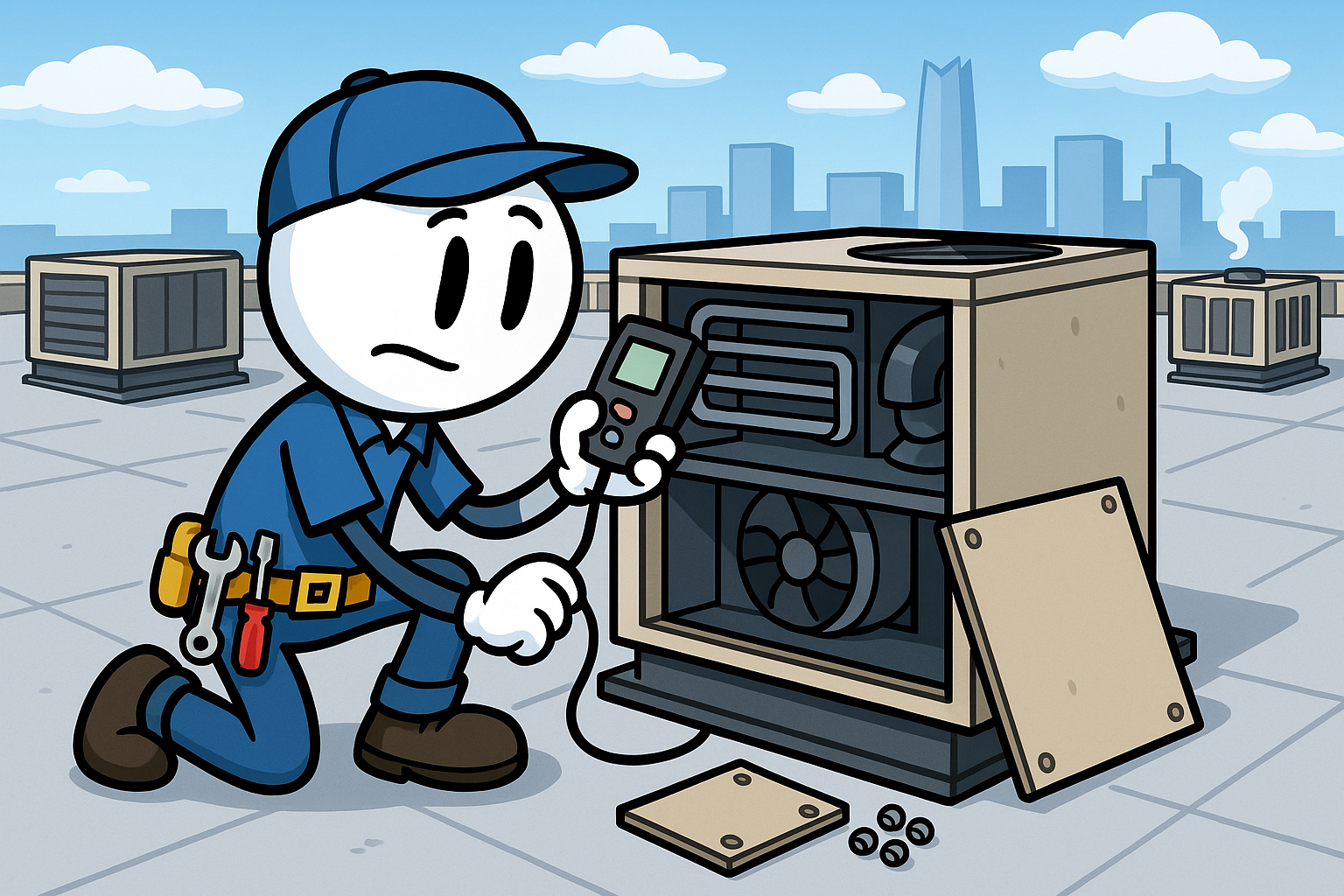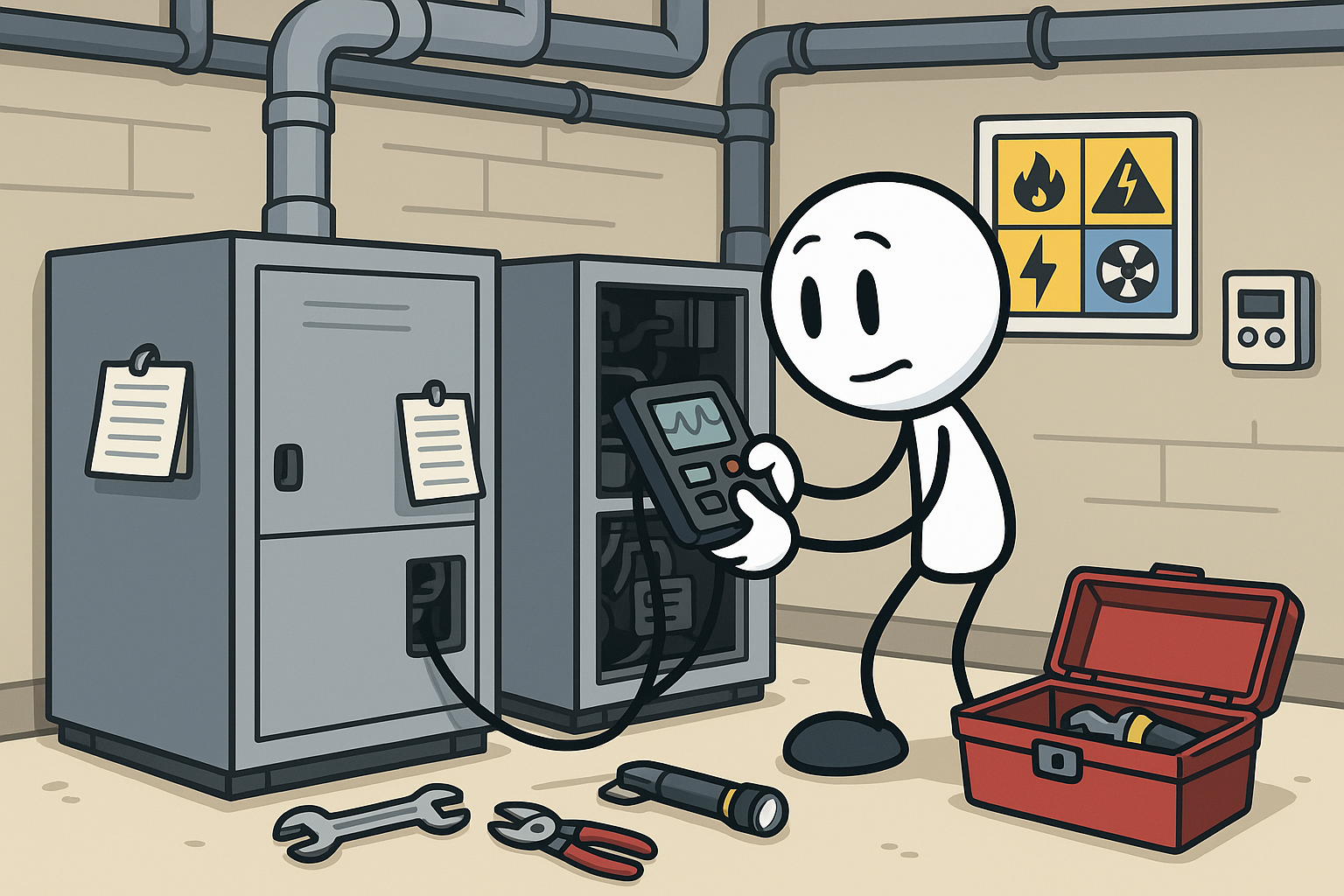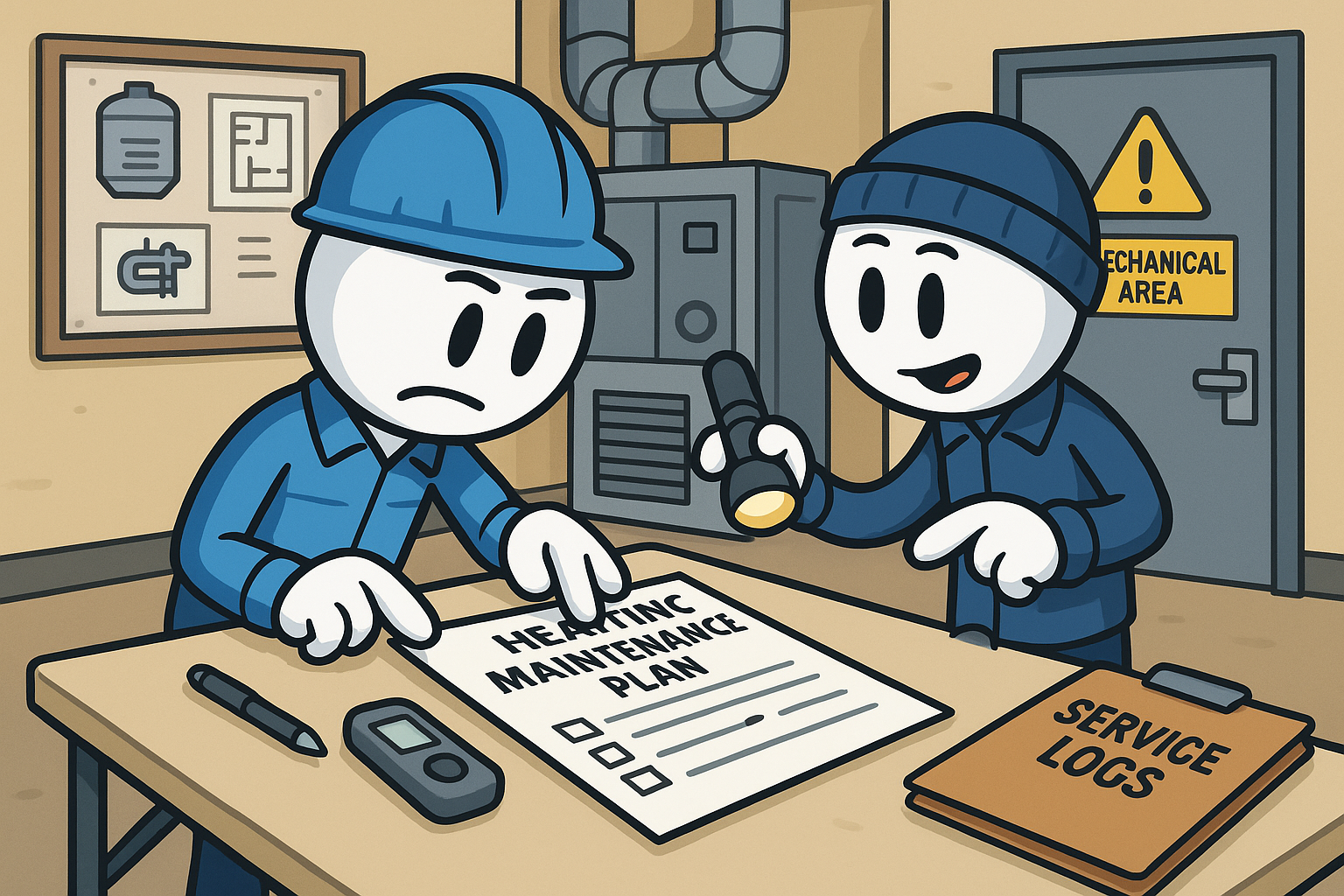Time to Upgrade? Signs Your Commercial Heating System Needs Replacement in the OKC Metro
Commercial facilities across the OKC Metro rely on consistent, reliable heat to keep tenants comfortable, protect equipment, and maintain code compliance during winter. When heating equipment begins to decline, the impact goes far beyond temperature. Operational costs rise, downtime becomes more likely, and safety risks increase.
This guide breaks down clear signs your commercial heating system is reaching the end of its service life. Using verified data, local weather patterns, and business focused insights, we explain why commercial heating system replacement in OKC is not only about comfort but long term cost control and operational continuity.
The Oklahoma Business Context: Why Heating Systems Fail Faster Here
Oklahoma’s climate puts intense stress on commercial heating equipment. The OKC Metro experiences long cooling seasons, sudden winter drops below freezing, and rapid temperature swings. These conditions force rooftop units and large furnaces to cycle hard and often.
Commercial systems that would last twenty years in milder states often perform closer to twelve to fifteen years here. This shorter functional lifespan is supported by field observations and federal energy guidance showing efficiency loss accelerates in climates with extreme heat and cold.
Additional pressures include:
- Large building footprints requiring higher heating loads
- Hail events damaging exposed rooftop equipment
- Rising energy costs affecting monthly budgets
- Code requirements mandating safe minimum indoor temperatures
When a commercial heating unit cannot maintain stable temperatures or control costs, replacement becomes a business necessity.
Key Indicators Your Commercial Heating System Needs Replacement
Below are the most reliable indicators that your heating system is near end of life.
Age Nearing or Exceeding Practical Lifespan
Most commercial heating units function well for fifteen to twenty years, but Oklahoma’s climate often shortens real world performance to twelve to fifteen. Once past this range, reliability and efficiency decline.
Signs include:
- Slow warm up times
- More noise during operation
- Lower heating output
- Higher energy consumption
Rising Utility Bills With No Operational Change
If winter utility bills climb despite regular maintenance, your system is likely losing efficiency.
Common causes:
- Weakening heat exchangers
- Worn blower motors
- Declining combustion efficiency
- Aging control systems
Upgrading to high efficiency equipment can cut energy use by twenty to fifty percent depending on building type.
Frequent Repairs
When repairs become common, internal components are wearing out. Two industry rules help guide decisions:
- The fifty percent repair rule
- The three repairs in three years rule
Both indicate that replacement is more economical than continued service calls.
Temperature Imbalances and Comfort Issues
Cold areas, uneven heating between floors, or wide temperature swings signal the system is struggling to maintain load. If recalibration does not resolve these issues, the system may be too worn to perform consistently.
Safety or Compliance Concerns
Failing heat exchangers, combustion issues, or ventilation problems pose carbon monoxide risks. If a system cannot hold required temperatures, the building may not meet commercial heating code.
In these cases, replacement is required.
Preventive Steps for Business Owners and Facility Managers
Here are steps that help avoid downtime and prepare for replacement when needed.
1. Review System Age and Maintenance Logs
Track installation year, repair history, and performance trends.
2. Schedule Seasonal Professional Inspections
Technicians can catch early signs of heat exchanger or burner wear.
3. Monitor Year Over Year Energy Usage
If usage rises while operations stay the same, efficiency is declining.
4. Assess the Cost Impact of Delaying Replacement
Older systems often consume more energy and require more repairs than newer models.
5. Explore Local Utility Rebates
OG&E and ONG offer rebates that reduce the cost of high efficiency system upgrades.
Expert Tip: If your system is over fifteen years old, schedule a replacement consultation before winter peaks.
Local Business Relevance and Why Timing Matters in the OKC Metro
Local conditions in the OKC Metro make proactive planning essential:
- Large temperature swings strain heating components
- Hail and ice storms damage outdoor systems
- Energy cost increases create pressure for efficient equipment
- Many buildings rely on older mechanical systems
Replacing a declining system before mid winter helps avoid urgent outages, tenant complaints, and rising energy use. Modern systems improve reliability, comfort, and cost control.
Scheduling an evaluation ensures your facility stays compliant and operational through the coldest months.
Final Thoughts
Commercial heating systems in the OKC Metro operate under demanding conditions. If your system shows signs such as high bills, frequent repairs, uneven performance, or age related decline, planning for replacement protects your building and your budget.
A newer system provides more stable heating, lower energy costs, and fewer mid season disruptions.
Written by A&T Mechanical | Updated November 2025





